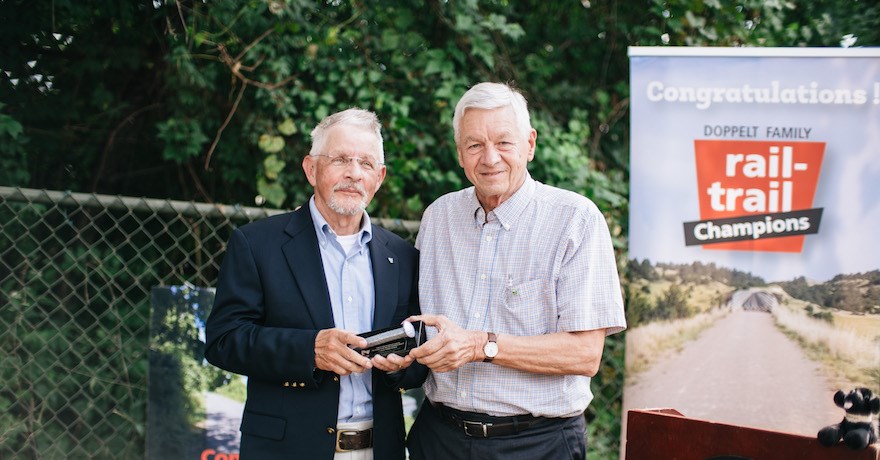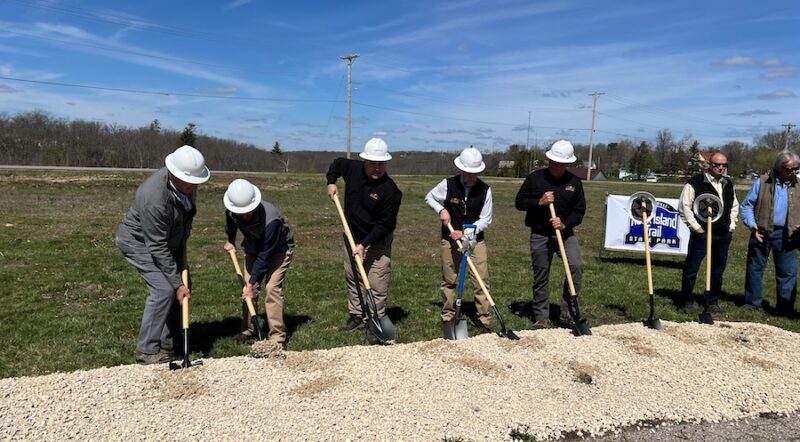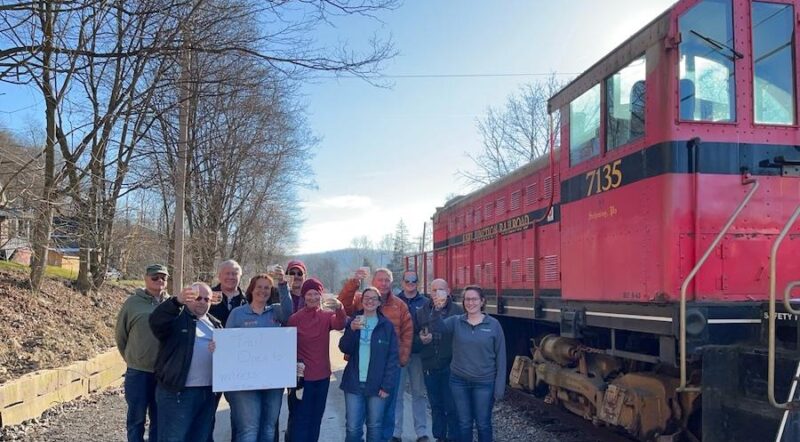How to Railbank
Capital Crescent Trail | Photo by Hung Tran
Railbanking takes place during a rail corridor abandonment process. Official negotiations with a railroad begin after the railroad submits an initial notification to abandon a line (similar to a letter of intent to abandon) to the Surface Transportation Board (STB). Negotiations end with either railbanking or line abandonment.
Due to the quick nature of most STB abandonment proceedings, groups interested in acquiring a corridor for trail use may want to approach the railroad before the abandonment process begins.
Railroads must follow one of three abandonment procedures that the STB has developed:
- Regulated abandonment (the most stringent and least common)
- Individual exemption
- Class exemption
Railroads that follow the individual exemption procedure will file a Petition for Exemption, which is used when the transaction is of “limited scope” or when regulation of the transaction is “not needed to protect the shippers from the abuse of market power.” Class exemptions, currently the most common option, generally apply if no local traffic has moved over the line for two or more years.
All abandonment proceedings are assigned a docket number that is used to catalogue all filings from the railroad and decisions from the STB. When searching the STB website or contacting the STB for specific filings, it’s helpful to know the docket number associated with the particular abandonment proceeding so you can track progress and information most efficiently. These docket numbers begin with the letters “AB” (for abandonment procedure) and are followed by a number that indicates which railroad company has filed for abandonment. A sub-number (Sub-No.) is then assigned to the specific case. The full docket number for a regulated abandonment might look like this: AB-16 (Sub-No. 200). Individual and class exemption applications are then followed by the letter “X,” such as “AB-16 (Sub-No. 200X).”
Please note that the STB adopted a rule amending its regulations related to the railbanking timeline which went into effect on February 2, 2020. Below you will find basic information and a timeline for exemption proceedings that reflects these changes.

Class Exemptions
This breakdown allows you to see the process for responding to a Notice of Exemption filing, including when each action takes place and who is responsible for the action or filing submissions.
Before Abandonment Filing
When: 10 days prior to abandonment filing
Who: Railroad
The railroad sends a notification to the State Service Board (or equivalent agency).
Day of Abandonment Filing
When: Day of abandonment filing
Who: Railroad
A petition for abandonment exemption (Notice of Exemption) is filed with the STB. To search for filings, visit the STB website and click on the drop down menu: Proceedings and Actions> Search STB Records. Be sure to choose “Filings” in the drop-down box labeled Search For. Sign up for RTC’s Early Warning System to receive notice of abandonments as soon as the railroad files with the STB. Notice of the abandonment will be published in the Federal Register within 20 days of the filing.
After Abandonment Filing
When: 30 days after abandonment filing (10 days after publication of notice in the Federal Register)
Who: Agency/organization interested in trail development
A request for a Notice of Interim Trail Use (NITU) is filed with the STB and the abandoning railroad’s legal department. This request should also include a “Statement of Willingness to Assume Financial Responsibility” and a request to establish a Public Use Condition (PUC). By filing a “Statement of Willingness to Assume Financial Responsibility,” you are merely indicating that you are capable of assuming financial responsibility should your agency/organization and the railroad reach mutually agreeable terms for the transfer of the corridor. This is not a contract, and your agency is under no obligation to acquire the corridor. A PUC prevents the railroad from selling or otherwise disposing of any property or trail-related structures, including bridges, tunnels or culverts, for a 180-day period from the effective date of abandonment. Since a railroad may not consent to the issuance of a trail use/railbanking condition, requesting a PUC, which the STB will almost always grant, may buy additional time to convince the railroad to negotiate with you.
When: 40 days after abandonment filing
Who: Railroad
Once the railroad has received the agency/organization’s letter expressing the desire to negotiate for railbanking, the railroad has 10 days to decide whether to participate in a discussion and to notify the STB. Railbanking with the STB is entirely voluntary; the STB will not issue a trail use/railbanking condition without the consent of the railroad.
When: 50 days after abandonment filing
Who: Another railroad interested in acquisition
Within 50 days of the abandonment filing, it is possible for another railroad to submit an Offer of Financial Assistance (OFA) to purchase the line or subsidize continued rail service; this intervention trumps railbanking. If no NITU, PUC or OFA has been filed within 50 days of the abandonment filing, and the railroad has addressed all environmental ,historic-preservation or other conditions imposed by the STB, then the railroad may consummate abandonment of the line. Consummation occurs when the railroad files a notice of consummation with the STB. Once the notice of consummation is filed, the STB loses jurisdiction over the corridor and railbanking with the STB is not possible (although “private railbanking” may still be an option).
When: One year after NITU is issued by STB (and up to three additional one-year periods)
Who: STB, Agency/Organization interested in trail development, and the railroad
If the railroad agrees to negotiate and submits a letter to the STB, then the STB will issue a NITU. The NITU permits the railroad to discontinue service, cancel tariffs, and salvage track and materials while railbanking negotiations are underway. Effective in February 2020, STB regulations provide for an initial NITU period of one-year. If an agreement is not reached within this initial one-year period, the railroad and trail group may request extensions of the NITU for up to three additional one-year periods.
Beyond four years, additional extensions will be granted if “extraordinary circumstances” are demonstrated. For more information, see the STB rule amending the railbanking timeline.
Railbanking negotiations are purely voluntary. Both the railroad and trail group can terminate NITU negotiations at any time.
End of Negotiations
If the negotiations are successful and the parties agree on a price, then the railroad will pass over a deed to the trail group, similar to any land acquisition. At this point, the railroad files a consummation notice with the STB, which will officially railbank the corridor. If the negotiations are unsuccessful and the railroad decides to abandon the corridor, the railroad must also file a consummation notice with the STB within one year or abandonment authorization or within 60 days after the removal of any legal barriers to consummation. Unless this period is extended by the STB, the abandonment authorization will lapse if the railroad fails to file a notice of consummation within this time period.
Individual Exemptions
The railroad will file a “Petition of Exemption” if they are seeking an individual exemption. The STB retains the right to request further information from third parties in an individual exemption.
Groups interested in pursuing railbanking will need to file a Notice of Interim Trail Use (NITU). For the most part the timeline for abandonment in an individual exemption is the same as for class exemptions although:
- NITU requests must be filed within 20 days of publishing of the petition in the Federal Register.
- OFAs are due within 10 days of publishing of the petition in the Federal Register
‣ Manual – Acquiring Rail Corridors: A How-To Manual (See chapter 6, “Can You Take Advantage of Railbanking?”)
‣ Manual – Secrets of Successful Rail-Trails, (See chapter 7, “What to Do if the Line is Soon to be Abandoned”)
‣ Fact Sheet – Railbanking Fact Sheet
‣ Report – Railbanking and Rail-Trails: A Legacy for the Future
‣ Article – Rails-to-Trails Conversions: A Legal Review
Definition
Railbanking:Condition allowing a railroad to “bank” a corridor for future rail use if necessary. During the interim, alternative trail use is a viable option.
Resources
‣ Manual – Acquiring Rail Corridors: A How-To Manual (See chapter 6, “Can You Take Advantage of Railbanking?”)
‣ Manual – Secrets of Successful Rail-Trails, (See chapter 7, “What to Do if the Line is Soon to be Abandoned”)
‣ Report – STB Rule Change on Timeline for Negotiating Trail Use
‣ Fact Sheet – Railbanking Fact Sheet
Railbanking Stories
View More Blogs
Notice: Upcoming Railroad Abandonment in Pike County, Kentucky

Missouri’s Rock Island Trail State Park: Building Miles and Momentum

Pennsylvania’s Armstrong Trails
TrailNation Collaborative
TrailNation™ Collaborative is a nationwide peer learning community from Rails to Trails Conservancy that brings together advocates, leaders and professionals from across disciplines to establish and accelerate trail networks across America. The collaborative provides proven tools, methods and resources, combined with RTC’s expertise and network of partners across the country, to accelerate the development of connected trail systems. When trails are connected across regions and states, trail networks have a proven transformative impact—they are essential infrastructure that creates thriving, healthier communities.